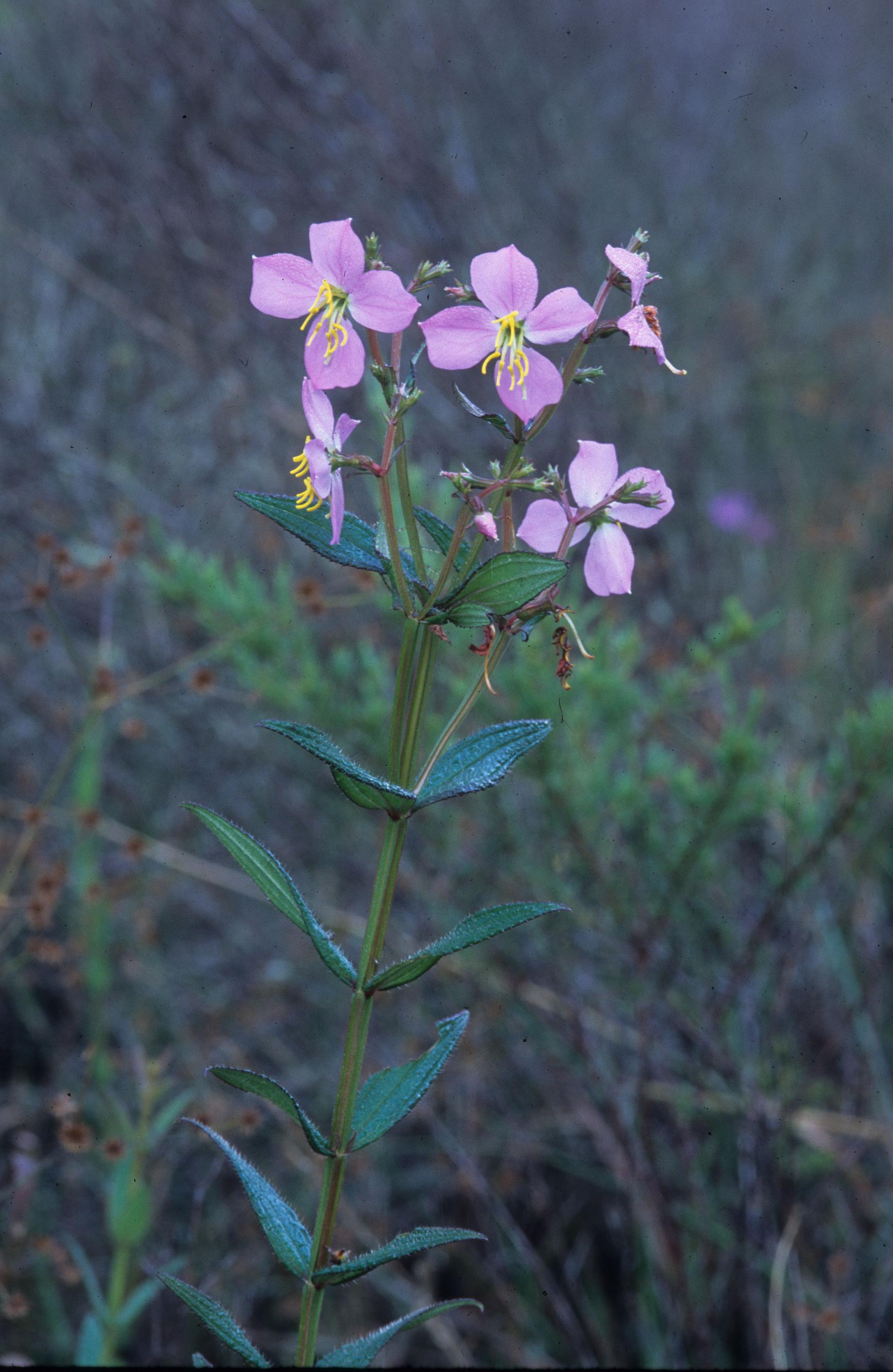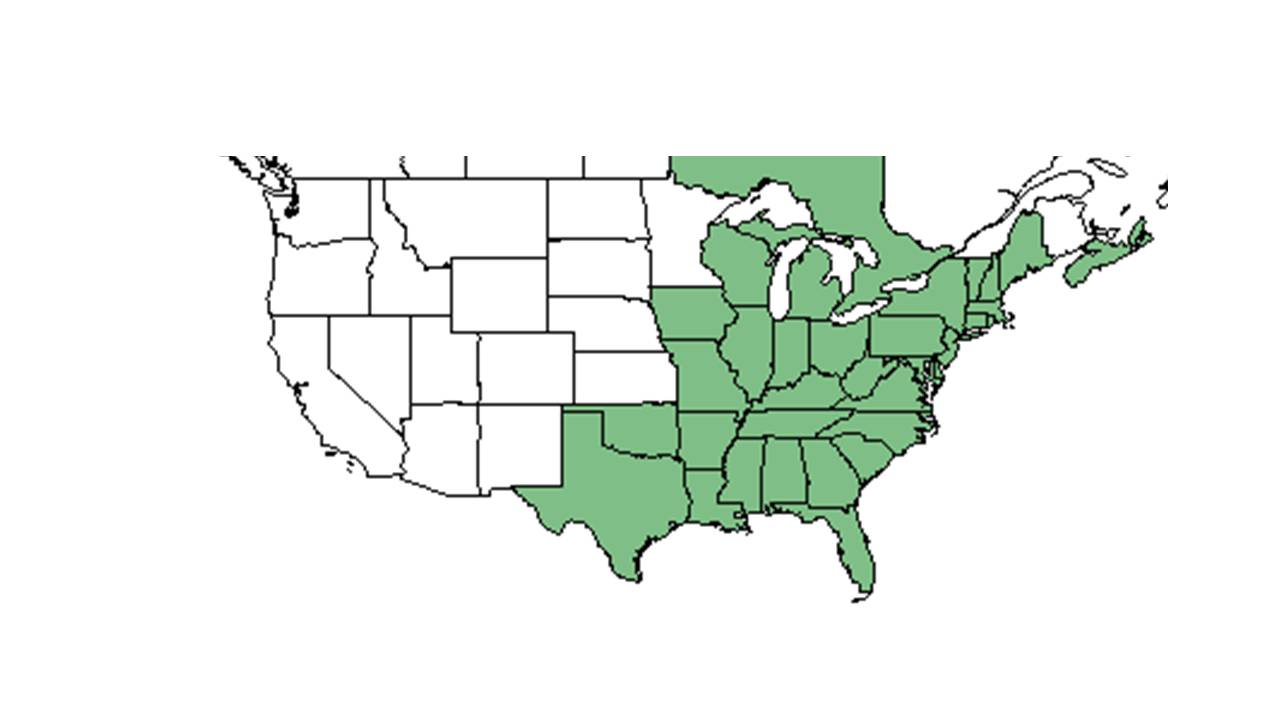Difference between revisions of "Rhexia virginica"
KatieMccoy (talk | contribs) |
|||
| Line 32: | Line 32: | ||
==Ecology== | ==Ecology== | ||
===Habitat=== <!--Natural communities, human disturbed habitats, topography, hydrology, soils, light, fire regime requirements for removal of competition, etc.--> | ===Habitat=== <!--Natural communities, human disturbed habitats, topography, hydrology, soils, light, fire regime requirements for removal of competition, etc.--> | ||
| − | It is found in wet ditches, savannas, flatwoods, and pond margins, and sometimes in standing water (Nelson 2006). It also has been found in cypress-gum swamps, seepage bogs, lake shores, and other poorly drained situations (FSU Herbarium). It seems to prefer partial shade and wet sandy or peaty soils (FSU Herbarium). It can also occur in some human disturbed areas, especially those with wet conditions, including ditches, roadsides, clearings, power line corridors, and drained and bulldozed bogs (FSU Herbarium). | + | It is found in wet ditches, savannas, flatwoods, and pond margins, and sometimes in standing water (Nelson 2006). It also has been found in cypress-gum swamps, seepage bogs, lake shores, and other poorly drained situations (FSU Herbarium). It seems to prefer partial shade and wet sandy or peaty soils (FSU Herbarium). It can also occur in some human disturbed areas, especially those with wet conditions, including ditches, roadsides, clearings, power line corridors, and drained and bulldozed bogs (FSU Herbarium). Associated species include ''Eriocaulon, Xyris, Cypress, Liquidambar styraciflua, Cyrilla, Rudbeckia mohrii, Pinus palustris, Pinus taeda, Sarracenia minor, Rhexia cubensis, Eragrostis refracta, Juncus abortivus, Juncus megacephalus, Juncus debilis, Lachnanthes caroliniana, Erigeron vernus, Ludwigia linearis,'' and ''Hypericum fasciulatum'' (FSU Herbarium). |
===Phenology=== <!--Timing off flowering, fruiting, seed dispersal, and environmental triggers. Cite PanFlora website if appropriate: http://www.gilnelson.com/PanFlora/ --> | ===Phenology=== <!--Timing off flowering, fruiting, seed dispersal, and environmental triggers. Cite PanFlora website if appropriate: http://www.gilnelson.com/PanFlora/ --> | ||
Revision as of 15:30, 15 December 2015
| Rhexia virginica | |
|---|---|

| |
| Photo was taken by Gil Nelson | |
| Scientific classification | |
| Kingdom: | Plantae |
| Division: | Magnoliophyta – Flowering plants |
| Class: | Magnoliopsida – Dicotyledons |
| Order: | Myrtales |
| Family: | Melastomataceae |
| Genus: | Rhexia |
| Species: | R. virginica |
| Binomial name | |
| Rhexia virginica L. | |

| |
| Natural range of Rhexia virginica from USDA NRCS Plants Database. | |
Common name: Handsome Harry (Nelson 2006).
Synonym: Rhexia stricta Pursh
Contents
Taxonomic notes
Description
Rhexia virginica is a perennial herbaceous species.
Distribution
R. virginica is a rare species found in depressional wetlands occurring in Alabama, Georgia, North Carolina, South Carolina, and Virginia (Edwards and Weakley 2001).
Ecology
Habitat
It is found in wet ditches, savannas, flatwoods, and pond margins, and sometimes in standing water (Nelson 2006). It also has been found in cypress-gum swamps, seepage bogs, lake shores, and other poorly drained situations (FSU Herbarium). It seems to prefer partial shade and wet sandy or peaty soils (FSU Herbarium). It can also occur in some human disturbed areas, especially those with wet conditions, including ditches, roadsides, clearings, power line corridors, and drained and bulldozed bogs (FSU Herbarium). Associated species include Eriocaulon, Xyris, Cypress, Liquidambar styraciflua, Cyrilla, Rudbeckia mohrii, Pinus palustris, Pinus taeda, Sarracenia minor, Rhexia cubensis, Eragrostis refracta, Juncus abortivus, Juncus megacephalus, Juncus debilis, Lachnanthes caroliniana, Erigeron vernus, Ludwigia linearis, and Hypericum fasciulatum (FSU Herbarium).
Phenology
It blooms July through October (Nelson 2006). Both fruiting and flowering have been observed in Florida in July through October (FSU Herbarium).
Seed dispersal
Seed bank and germination
Fire ecology
This species has been found in habitat that burns frequently--longleaf pineland (FSU Herbarium).
Pollination
Use by animals
Diseases and parasites
Conservation and Management
Cultivation and restoration
Photo Gallery
References and notes
Edwards, A. L. and A. S. Weakley 2001. Population biology and management of rare plants in depression wetlands of the southeastern coastal plain, USA. Natural Areas Journal 21: 12-35.
Florida State University Robert K. Godfrey Herbarium database. URL: http://herbarium.bio.fsu.edu. Last accessed: June 2014. Collectors: Robert Kral, Loran C. Anderson, Robert K. Godfrey, N. C. Henderson, P. L. Redfearn, N. C. Henderson, Bruce Hansen, JoAnn Hansen, S. C. Hood, John Morrill, Grady W. Reinert, C. E. Wood, W. M. B., Cecil R Slaughter, Marc Minno, S. B. Jones, J. Stutts, Angus Gholson, Leon Neel, R. R. Bounds, R. Komarek, Cindi Stewart, and MacClendons. States and Counties: Florida: Bay, Bradford, Escambia, Franklin, Gadsden, Gulf, Jackson, Jefferson, Leon, Liberty, Madison, Nassau, Okaloosa, Santa Rosa, St Johns, Wakulla, Walton, and Washington. Georgia: Thomas.
Nelson, Gil. Atlantic Coastal Plain Wildflowers: A Field Guide to the Wildflowers of the Coastal Regions of Virginia, North Carolina, South Carolina, Georgia, and Northeastern Florida. Guilford, CT: FalconGuide, 2006. 95. Print.